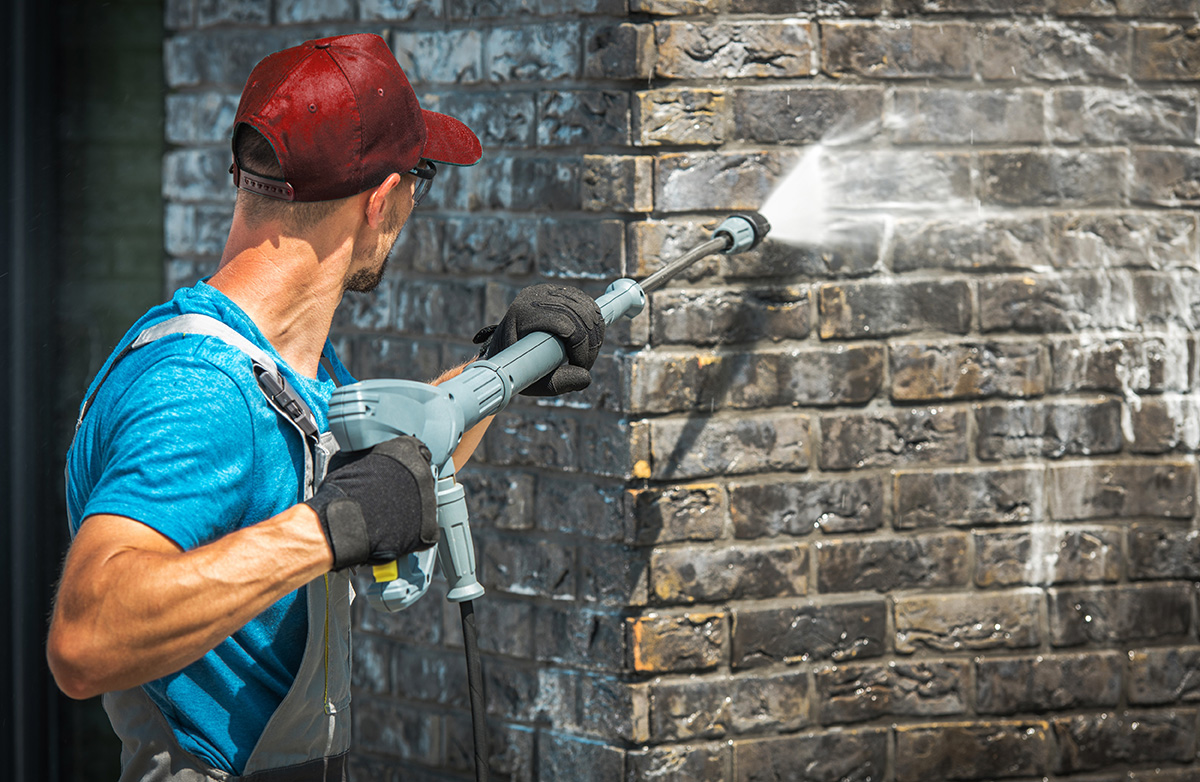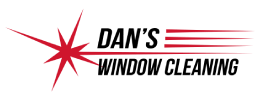Pressure Washing vs. House Washing: What’s Best for Your Home Exterior?
Your home’s exterior faces constant assault from the elements. Rain, wind, dirt, mildew, and pollutants gradually build up on surfaces, leaving your property looking dull and potentially causing long-term damage. Regular cleaning isn’t just about curb appeal—it’s about protecting your investment and maintaining your home’s structural integrity.
When it comes to exterior cleaning, two primary methods dominate the market: pressure washing and house washing (also known as soft washing). While both aim to restore your home’s appearance, they use dramatically different approaches. Pressure washing relies on high-pressure water to blast away dirt and grime, while house washing combines low-pressure water with specialized cleaning solutions to gently remove contaminants.
Understanding the differences between these methods can save you thousands in potential damage and ensure your home receives the care it deserves. The wrong cleaning approach can strip paint, damage siding, force water into unwanted areas, or fail to eliminate stubborn biological growth. This comprehensive guide will help you make an informed decision about which method suits your home’s specific needs.
What is Pressure Washing?
Pressure washing uses high-pressure water spray to remove loose paint, mold, grime, dust, mud, and dirt from surfaces and objects. The equipment typically generates water pressure between 1,300 to 3,000 PSI (pounds per square inch), creating a powerful force capable of stripping away years of accumulated buildup.
The process involves connecting a pressure washer to a water source, selecting the appropriate nozzle tip for the cleaning task, and systematically working across surfaces. Different nozzle angles create varying spray patterns—from concentrated streams for tough stains to wider fans for general cleaning. Most pressure washers can accommodate cleaning detergents, though the high pressure often provides sufficient cleaning power on its own.
Pressure washing excels at cleaning hard, durable surfaces like concrete driveways, sidewalks, decks, and certain types of siding. The intense water pressure can penetrate porous materials and dislodge deeply embedded dirt that gentler methods might leave behind. It’s particularly effective for removing stubborn stains, oil spots, and heavy accumulations of organic matter.
However, this same power that makes pressure washing effective also makes it potentially destructive. The high-pressure stream can damage delicate surfaces, force water behind siding, strip protective coatings, and even cause personal injury if not handled properly.

What is House Washing (Soft Washing)?
House washing, commonly referred to as soft washing, takes a completely different approach to exterior cleaning. This method uses low-pressure water—typically between 60 to 300 PSI—combined with specialized cleaning solutions to safely clean delicate surfaces. The cleaning power comes from chemical action rather than mechanical force.
The soft washing process begins with applying biodegradable cleaning solutions specifically formulated to break down organic growth, dirt, and stains. These solutions typically contain surfactants that help penetrate and lift contaminants, along with agents that kill mold, mildew, algae, and bacteria at their roots. After allowing the cleaning solution time to work, technicians rinse the surface with low-pressure water.
This gentle approach makes house washing ideal for cleaning vinyl siding, painted surfaces, roofing materials, windows, and other delicate exterior components. The cleaning solutions do the heavy lifting, eliminating the need for damaging high pressure. Because the chemicals kill organic growth rather than just removing visible signs, soft washing results often last longer than pressure washing.
Professional house washing services use different chemical formulations depending on the surface material and type of contamination. Some solutions focus on organic growth, while others target specific stains or discoloration. The key is matching the right cleaning chemistry to the specific cleaning challenge.
Key Differences Between Methods
The fundamental differences between pressure washing and house washing extend far beyond just water pressure levels.
- Pressure Levels: Pressure washing operates at 1,300-3,000+ PSI, while house washing uses 60-300 PSI. This dramatic difference in force completely changes how each method interacts with surfaces.
- Cleaning Mechanism: Pressure washing relies primarily on mechanical force to physically blast contaminants away. House washing depends on chemical action, where specialized solutions break down and dissolve dirt, organic growth, and stains.
- Equipment Requirements: Pressure washing requires high-pressure pumps, reinforced hoses, and various nozzle attachments. House washing uses low-pressure equipment with specialized chemical injection systems and application tools.
- Chemical Usage: While pressure washing can incorporate detergents, it often relies on water pressure alone. House washing always involves carefully selected cleaning solutions tailored to specific contaminants and surface materials.
- Application Speed: Pressure washing typically covers surfaces more quickly due to the immediate visual results. House washing requires dwell time for chemicals to work, making the process more methodical but potentially more thorough.
- Operator Skill Level: Both methods require training, but house washing demands extensive knowledge of cleaning chemistry, surface compatibility, and proper mixing ratios.
Surface Suitability: Which Method Works Where?
Different exterior surfaces respond better to specific cleaning approaches based on their material composition, age, and condition.
Ideal for Pressure Washing:
- Concrete driveways and sidewalks can withstand high pressure and benefit from the mechanical cleaning action
- Composite and treated lumber decks (with proper technique and pressure settings)
- Brick surfaces, though care must be taken around mortar joints
- Some types of stone and masonry work
- Metal surfaces like aluminum or steel siding (with appropriate pressure settings)
Best Suited for House Washing:
- Vinyl siding, which can crack, warp, or allow water infiltration under high pressure
- Painted surfaces that could be stripped or damaged by intense water pressure
- Roof materials including asphalt shingles, tiles, and metal roofing
- Windows and delicate trim work
- EIFS (Exterior Insulation Finishing System) and stucco surfaces
- Wood surfaces that could be gouged or splintered by high pressure
Surface-Specific Considerations: Age and condition play crucial roles in method selection. Older painted surfaces may have compromised adhesion, making them vulnerable to pressure washing damage. Similarly, aging vinyl siding becomes more brittle and prone to cracking under high pressure. Even surfaces that typically handle pressure washing well may require gentler treatment if they show signs of wear or previous damage.

Advantages and Disadvantages
Pressure Washing Pros:
- Immediate visible results with instant gratification
- Highly effective on heavily soiled hard surfaces
- Can remove stubborn stains that resist chemical treatment
- Generally faster coverage of large, durable surfaces
- Lower chemical usage reduces environmental concerns
- Equipment is widely available and relatively affordable
Pressure Washing Cons:
- High risk of surface damage if used incorrectly
- Can force water into unwanted areas, potentially causing mold or structural issues
- May strip protective coatings and paint
- Often requires multiple treatments for biological growth
- Safety hazards from high-pressure equipment
- May not kill organic growth at the root level
House Washing Pros:
- Safe for virtually all exterior surfaces when properly applied
- Kills organic growth at the source, providing longer-lasting results
- Preserves surface integrity and protective coatings
- Reaches areas that high pressure might miss or damage
- Professional appearance with even, thorough cleaning
- Reduces risk of water infiltration behind siding
House Washing Cons:
- Requires more time for chemical dwell and thorough rinsing
- Higher upfront costs due to specialized chemicals and equipment
- Demands greater technical knowledge and training
- Some heavily embedded stains may require additional treatment
- Weather conditions can affect chemical effectiveness
- Requires proper disposal consideration for runoff
Environmental Impact Considerations
Both cleaning methods carry environmental implications that responsible property owners should consider.
Pressure wash cleaning generates significant water runoff that can carry dislodged contaminants into storm drains and local waterways. The high volume of water used—often 3-5 gallons per minute—multiplies the environmental impact. However, pressure washing typically uses fewer chemicals, reducing chemical runoff concerns.
House washing uses less water overall but introduces cleaning chemicals into the environment. Reputable service providers use biodegradable solutions and follow proper containment procedures, but the chemicals still require careful handling and disposal consideration.
Professional services can minimize environmental impact through proper containment systems, eco-friendly chemical selection, and responsible disposal practices. Many modern soft washing chemicals are designed to break down naturally without harming plants or groundwater.
Water conservation becomes particularly important in drought-prone areas. House washing’s lower water usage may provide environmental advantages in these regions, while pressure washing’s higher consumption could be problematic.
Dan’s Window Cleaning: Professional Expertise You Can Trust
Dan’s Window Cleaning brings years of experience and specialized knowledge to exterior cleaning challenges throughout the region. Understanding that every home presents unique cleaning requirements, their team expertly evaluates each property to recommend the most appropriate cleaning method.
Their comprehensive approach begins with a thorough assessment of your home’s exterior surfaces, existing conditions, and specific contamination issues. This evaluation process ensures that delicate surfaces receive gentle treatment while heavily soiled areas get the attention they need. Dan’s Window Cleaning maintains professional-grade equipment for both pressure washing and house washing, allowing them to select the optimal method for each situation.
The company’s commitment to quality extends beyond just cleaning results. They prioritize surface protection, ensuring that their cleaning process enhances rather than damages your property. Their technicians receive ongoing training in the latest cleaning techniques, safety protocols, and environmental best practices.
Customer satisfaction drives every aspect of their service delivery. Dan’s Window Cleaning stands behind their work with service guarantees and maintains full insurance coverage for client peace of mind. Their systematic approach includes pre-cleaning surface preparation, careful application of appropriate cleaning methods, and thorough post-cleaning inspection.
What sets Dan’s Window Cleaning apart is their willingness to educate customers about proper maintenance practices and realistic expectations. They provide honest assessments of what cleaning can and cannot achieve, helping property owners make informed decisions about their exterior maintenance investments.

Making the Right Choice for Your Home
Choosing between pressure washing and house wash cleaning depends on your home’s materials and cleaning needs. Use pressure washing for durable surfaces like concrete and decking to tackle heavy dirt, while house washing is ideal for delicate surfaces like vinyl siding, painted areas, or roofs, especially when dealing with mold, mildew, or algae.
A combined approach often works best, with pressure washing for tough surfaces like driveways and soft washing for areas requiring gentler care, such as siding and trim. Professional services, like Dan’s Window Cleaning, tailor these methods to ensure effective cleaning without risking damage.
Don’t focus solely on cost—pressure washing may seem cheaper, but improper use can lead to costly repairs. House washing might have a higher upfront cost but provides better long-term value by protecting your home and delivering lasting results.
Protecting Your Investment with Professional Service
Protect your home’s value with expert exterior cleaning from Dan’s Window Cleaning. DIY methods can’t match the expertise, proper equipment, or safety measures professionals provide. Different materials and contaminants require specialized cleaning techniques, and Dan’s team stays up-to-date with the latest technologies and standards. Schedule an evaluation today to get a tailored cleaning plan that’s safe, effective, and designed for your home’s needs. Don’t risk damage—trust the experts!
https://www.google.com/maps?cid=15329728092816842314
